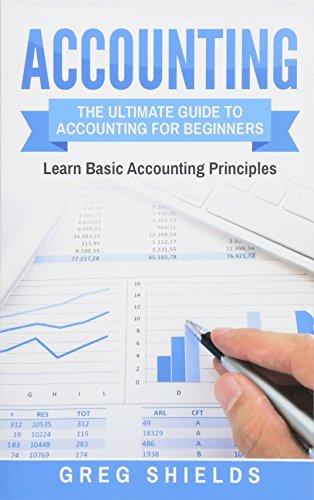Comprehensive Problem 1 Part 1: The following is a comprehensive problem which encompasses all of the elements learned in previous chapters. You can refer to the objectives for each chapter covered as a review of the concepts. Kelly Pitney began her consulting business, Kelly Consulting, on April 1, 20Y8. The chart of accounts for Kelly Consulting is shown below: 11. Cash 12 Accounts Receivable 14 Supples 15 Prepoid Rent 16 Prepaid Insurance 18 Dffice Equipment 19 Accumulated Depreciation 21 Accounts Payable 22. Salaries Payable 23 Unearned Rees 31 Common Stock 12. Retained Earnings 33. Dividends 41. Fees Eamed 51 Salary Expense 52. Rent Expense 53 Supples Expense 54. Degreciacisn Expense 55 Indurance Expense 59 Hisceflaneous Expense Comprehensive Problem 1 Part 7: The following is a comprehensive problem which encompasses all of the elements learned in previous chapters. You can refer to the objectives for each chapter covered as a review of the concepts. Note: You must complete parts 1,2,3,4, and 6 before completing part 7. Part 5 is optional. Prepare an adjusted trial balance. If an amount box does not require an entry, leave it blank. Comprehensive Problem 1 Part 8: The following is a comprehensive problem which encompasses all of the elements learned in previous chapters. You can refer to the objectives for each chapter covered as a review of the concepts. NOTE: You must complete parts 1,2,3,4,6 and 7 before completing part 8 . Part 5 is optional. Prepare an income statement. Prepare a statement of stockholders' equity. If an amount box does not require an entry, leave it blank. If a net loss is incurred or dividends were paid, enter that amount as a negative number using a minus sign. Prepare a balance sheet. Prepare a statement of stockholders' equity. If an amount box does not require an entry, leave it blank. If a net loss is incurred or dividends were paid, enter that amount as a negative number using a minus sign. Comprehensive Problem 1 Part 9: The following is a comprehensive problem which encompasses all of the elements learned in previous chapters, You can refer to the objectives for each chapter covered as a review of the concepts. Note: You must complete parts 1,2,3,4,6,7 and 8 before completing part 9. Part 5 is optional. Part 9: Prepare the closing entries below. Then, using the attached spreadsheet from part 2, post the entries to your general ledger. If an amount box does not require an entry, leave it blank. Comprehensive Problem 1 Part 10: The following is a comprehensive problem which encompasses all of the elements learned in previous chapters. You can refer to the objectives for each chapter covered as a review of the concepts. Note: You must complete parts 1,2,3,4,6,7,8 and 9 before completing part 10. Part 5 is optional. Prepare a post-closing trial balance. If an amount box does not require an entry, leave it blank. Comprehensive Problem 1 Part 1: The following is a comprehensive problem which encompasses all of the elements learned in previous chapters. You can refer to the objectives for each chapter covered as a review of the concepts. Kelly Pitney began her consulting business, Kelly Consulting, on April 1, 20Y8. The chart of accounts for Kelly Consulting is shown below: 11. Cash 12 Accounts Receivable 14 Supples 15 Prepoid Rent 16 Prepaid Insurance 18 Dffice Equipment 19 Accumulated Depreciation 21 Accounts Payable 22. Salaries Payable 23 Unearned Rees 31 Common Stock 12. Retained Earnings 33. Dividends 41. Fees Eamed 51 Salary Expense 52. Rent Expense 53 Supples Expense 54. Degreciacisn Expense 55 Indurance Expense 59 Hisceflaneous Expense Comprehensive Problem 1 Part 7: The following is a comprehensive problem which encompasses all of the elements learned in previous chapters. You can refer to the objectives for each chapter covered as a review of the concepts. Note: You must complete parts 1,2,3,4, and 6 before completing part 7. Part 5 is optional. Prepare an adjusted trial balance. If an amount box does not require an entry, leave it blank. Comprehensive Problem 1 Part 8: The following is a comprehensive problem which encompasses all of the elements learned in previous chapters. You can refer to the objectives for each chapter covered as a review of the concepts. NOTE: You must complete parts 1,2,3,4,6 and 7 before completing part 8 . Part 5 is optional. Prepare an income statement. Prepare a statement of stockholders' equity. If an amount box does not require an entry, leave it blank. If a net loss is incurred or dividends were paid, enter that amount as a negative number using a minus sign. Prepare a balance sheet. Prepare a statement of stockholders' equity. If an amount box does not require an entry, leave it blank. If a net loss is incurred or dividends were paid, enter that amount as a negative number using a minus sign. Comprehensive Problem 1 Part 9: The following is a comprehensive problem which encompasses all of the elements learned in previous chapters, You can refer to the objectives for each chapter covered as a review of the concepts. Note: You must complete parts 1,2,3,4,6,7 and 8 before completing part 9. Part 5 is optional. Part 9: Prepare the closing entries below. Then, using the attached spreadsheet from part 2, post the entries to your general ledger. If an amount box does not require an entry, leave it blank. Comprehensive Problem 1 Part 10: The following is a comprehensive problem which encompasses all of the elements learned in previous chapters. You can refer to the objectives for each chapter covered as a review of the concepts. Note: You must complete parts 1,2,3,4,6,7,8 and 9 before completing part 10. Part 5 is optional. Prepare a post-closing trial balance. If an amount box does not require an entry, leave it blank












